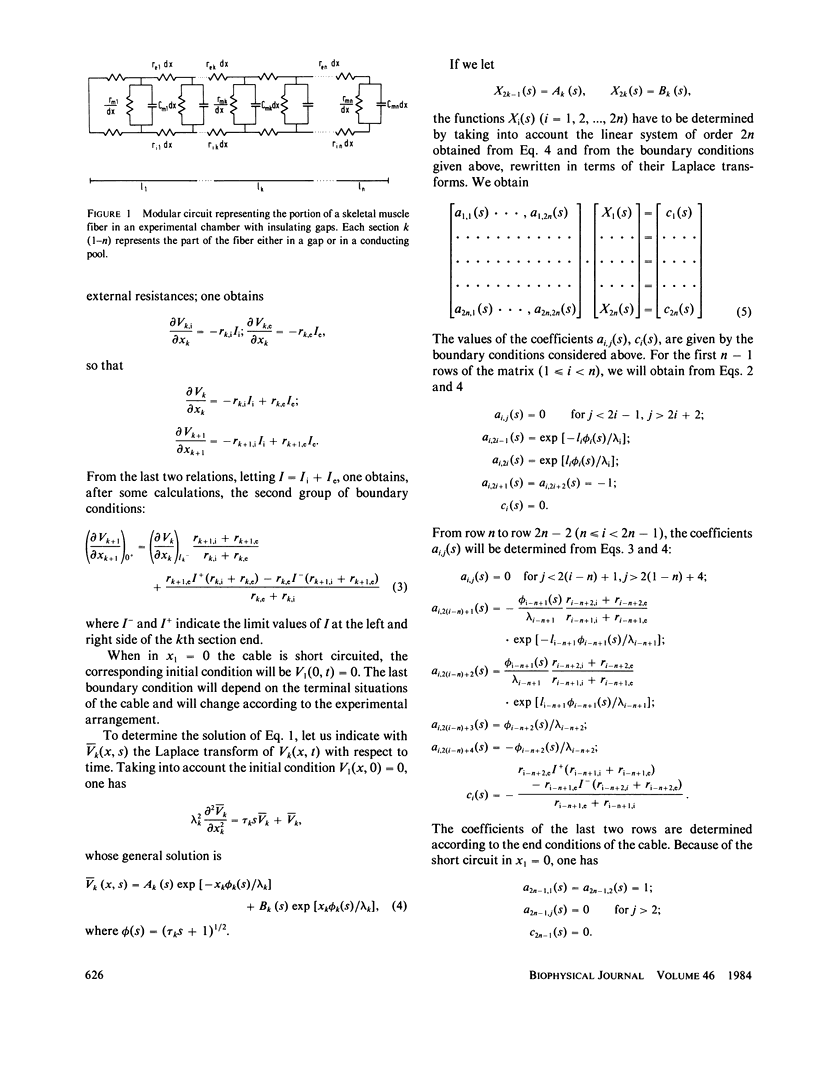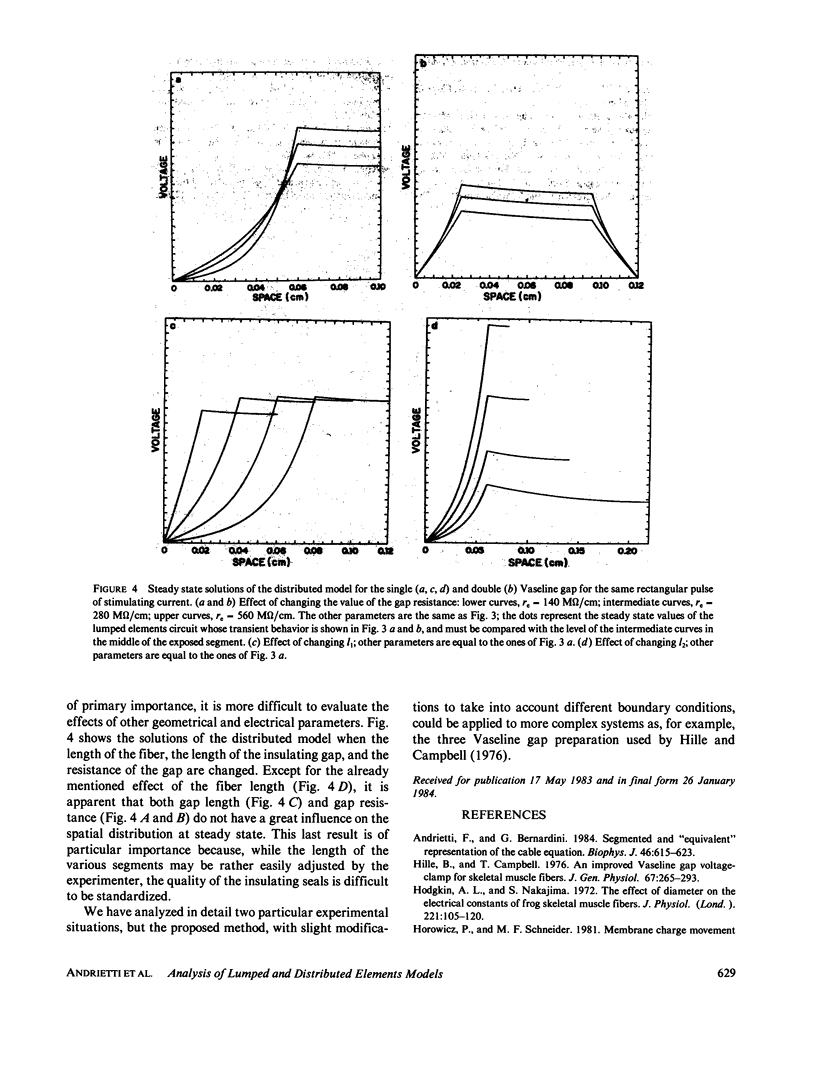Abstract
A general method of finding the time course and the steady state distribution of potential in Vaseline or sucrose gap preparations is given by making use of the linear cable equation. The general solution has been found analytically in terms of its Laplace transform and then numerically inverted. Two particular experimental situations, namely the single gap and the double gap preparations, have been analyzed. The results have been compared with the solutions of the commonly used lumped elements models. While for the double gap no large errors are introduced by the lumped model, for the single gap there are significant differences. The dependence of the voltage distribution on various electrical and geometrical parameters has been examined. It is suggested that the proposed mathematical treatment might be used by experimenters as a reference to assess the validity of simplified lumped models.
Full text
PDF





Selected References
These references are in PubMed. This may not be the complete list of references from this article.
- Andrietti F., Bernardini G. Segmented and "equivalent" representation of the cable equation. Biophys J. 1984 Nov;46(5):615–623. doi: 10.1016/S0006-3495(84)84060-6. [DOI] [PMC free article] [PubMed] [Google Scholar]
- Hille B., Campbell D. T. An improved vaseline gap voltage clamp for skeletal muscle fibers. J Gen Physiol. 1976 Mar;67(3):265–293. doi: 10.1085/jgp.67.3.265. [DOI] [PMC free article] [PubMed] [Google Scholar]
- Hodgkin A. L., Nakajima S. The effect of diameter on the electrical constants of frog skeletal muscle fibres. J Physiol. 1972 Feb;221(1):105–120. doi: 10.1113/jphysiol.1972.sp009742. [DOI] [PMC free article] [PubMed] [Google Scholar]
- Jaimovich E., Ildefonse M., Barhanin J., Rougier O., Lazdunski M. Centruroides toxin, a selective blocker of surface Na+ channels in skeletal muscle: voltage-clamp analysis and biochemical characterization of the receptor. Proc Natl Acad Sci U S A. 1982 Jun;79(12):3896–3900. doi: 10.1073/pnas.79.12.3896. [DOI] [PMC free article] [PubMed] [Google Scholar]
- Jirounek P., Jones G. J., Burckhardt C. W., Straub R. W. The correction factors for sucrose gap measurements and their practical applications. Biophys J. 1981 Jan;33(1):107–119. doi: 10.1016/S0006-3495(81)84875-8. [DOI] [PMC free article] [PubMed] [Google Scholar]
- Jirounek P., Straub R. W. The potential distribution and the short-circuiting factor in the sucrose gap. Biophys J. 1971 Jan;11(1):1–10. doi: 10.1016/S0006-3495(71)86191-X. [DOI] [PMC free article] [PubMed] [Google Scholar]
- Kovács L., Ríos E., Schneider M. F. Calcium transients and intramembrane charge movement in skeletal muscle fibres. Nature. 1979 May 31;279(5712):391–396. doi: 10.1038/279391a0. [DOI] [PubMed] [Google Scholar]
- Kovács L., Schneider M. F. Contractile activation by voltage clamp depolarization of cut skeletal muscle fibres. J Physiol. 1978 Apr;277:483–506. doi: 10.1113/jphysiol.1978.sp012286. [DOI] [PMC free article] [PubMed] [Google Scholar]
- McGuigan J. A. Some limitations of the double sucrose gap, and its use in a study of the slow outward current in mammalian ventricular muscle. J Physiol. 1974 Aug;240(3):775–806. doi: 10.1113/jphysiol.1974.sp010634. [DOI] [PMC free article] [PubMed] [Google Scholar]


